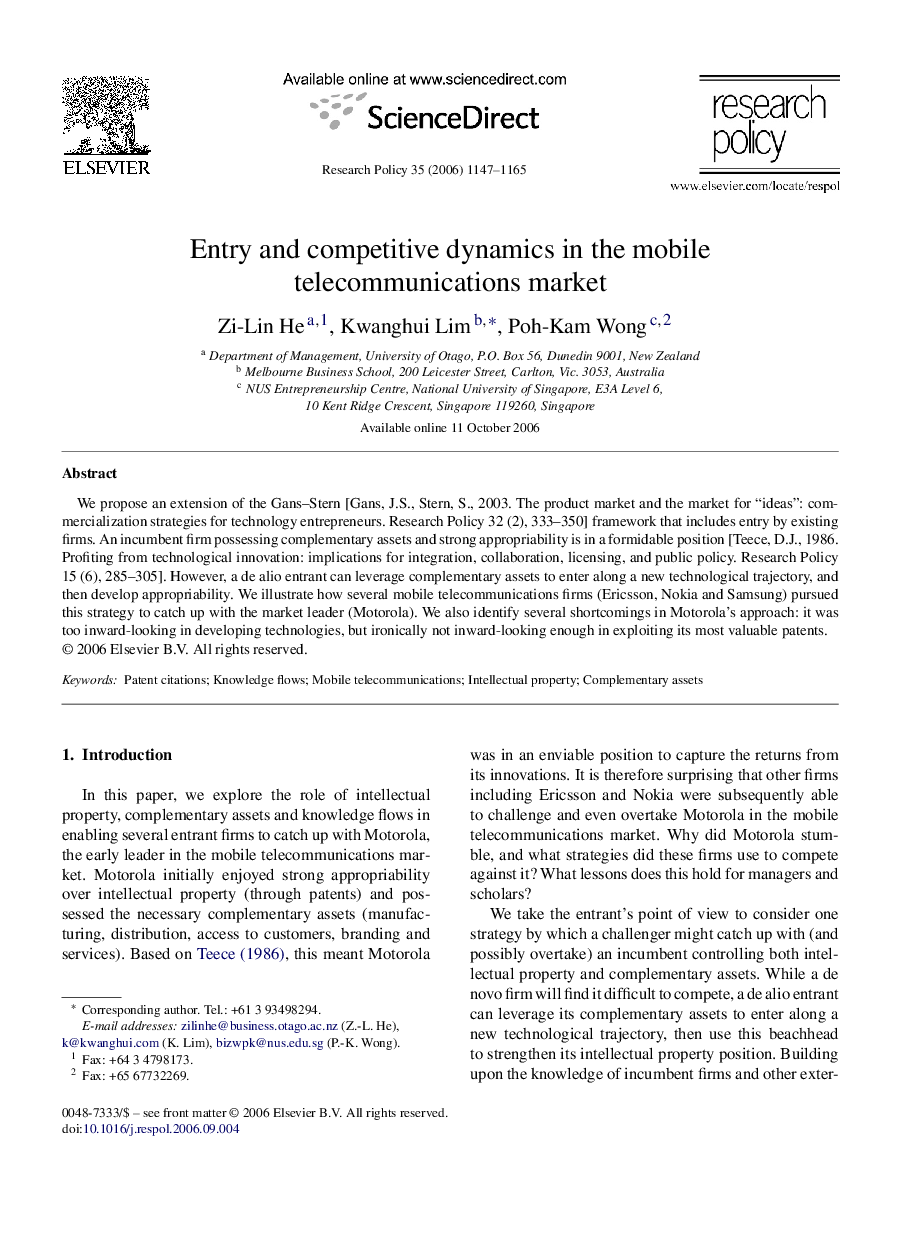| Article ID | Journal | Published Year | Pages | File Type |
|---|---|---|---|---|
| 985288 | Research Policy | 2006 | 19 Pages |
We propose an extension of the Gans–Stern [Gans, J.S., Stern, S., 2003. The product market and the market for “ideas”: commercialization strategies for technology entrepreneurs. Research Policy 32 (2), 333–350] framework that includes entry by existing firms. An incumbent firm possessing complementary assets and strong appropriability is in a formidable position [Teece, D.J., 1986. Profiting from technological innovation: implications for integration, collaboration, licensing, and public policy. Research Policy 15 (6), 285–305]. However, a de alio entrant can leverage complementary assets to enter along a new technological trajectory, and then develop appropriability. We illustrate how several mobile telecommunications firms (Ericsson, Nokia and Samsung) pursued this strategy to catch up with the market leader (Motorola). We also identify several shortcomings in Motorola's approach: it was too inward-looking in developing technologies, but ironically not inward-looking enough in exploiting its most valuable patents.
